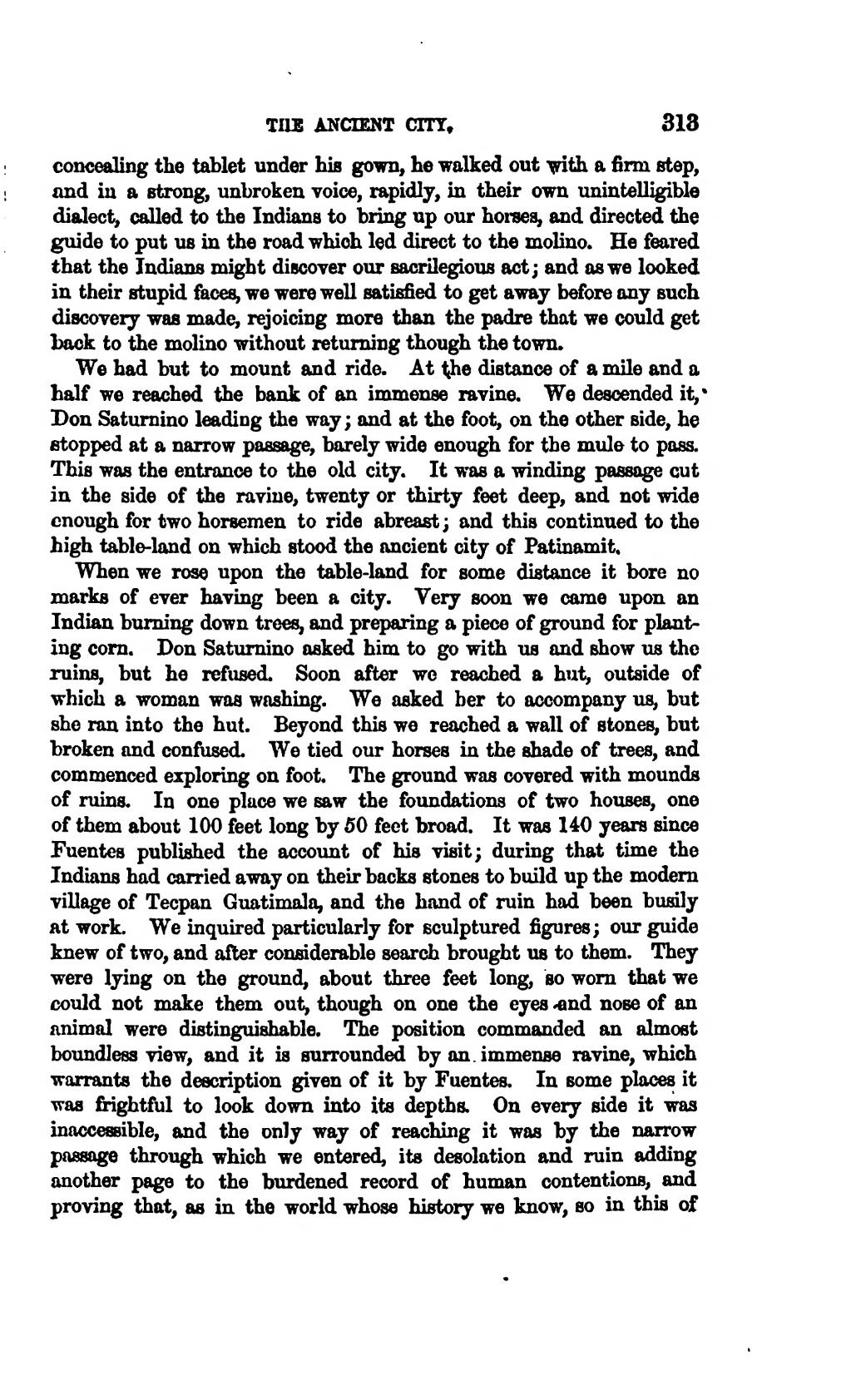concealing the tablet under his gown, he walked out with a firm step, and in a strong, unbroken voice, rapidly, in their own unintelligible dialect, called to the Indians to bring up our horses, and directed the guide to put us in the road which led direct to the molino. He feared that the Indians might discover our sacrilegious act; and as we looked in their stupid faces, we were well satisfied to get away before any such discovery was made, rejoicing more than the padre that we could get back to the molino without returning though the town.
We had but to mount and ride. At the distance of a mile and a half we reached the bank of an immense ravine. We descended it, Don Saturnino leading the way; and at the foot, on the other side, he stopped at a narrow passage, barely wide enough for the mule to pass. This was the entrance to the old city. It was a winding passage cut in the side of the ravine, twenty or thirty feet deep, and not wide enough for two horsemen to ride abreast; and this continued to the high table-land on which stood the ancient city of Patinamit.
When we rose upon the table-land for some distance it bore no marks of ever having been a city. Very soon we came upon an Indian burning down trees, and preparing a piece of ground for planting corn. Don Saturnino asked him to go with us and show us the ruins, but he refused. Soon after we reached a hut, outside of which a woman was washing. We asked her to accompany us, but she ran into the hut. Beyond this we reached a wall of stones, but broken and confused. We tied our horses in the shade of trees, and commenced exploring on foot. The ground was covered with mounds of ruins. In one place we saw the foundations of two houses, one of them about 100 feet long by 50 feet broad. It was 140 years since Fuentes published the account of his visit; during that time the Indians had carried away on their backs stones to build up the modern village of Tecpan Guatimala, and the hand of ruin had been busily at work. We inquired particularly for sculptured figures; our guide knew of two, and after considerable search brought us to them. They were lying on the ground, about three feet long, so worn that we could not make them out, though on one the eyes and nose of an animal were distinguishable. The position commanded an almost boundless view, and it is surrounded by an immense ravine, which warrants the description given of it by Fuentes. In some places it was frightful to look down into its depths. On every side it was inaccessible, and the only way of reaching it was by the narrow passage through which we entered, its desolation and ruin adding another page to the burdened record of human contentions, and proving that, as in the world whose history we know, so in this of
